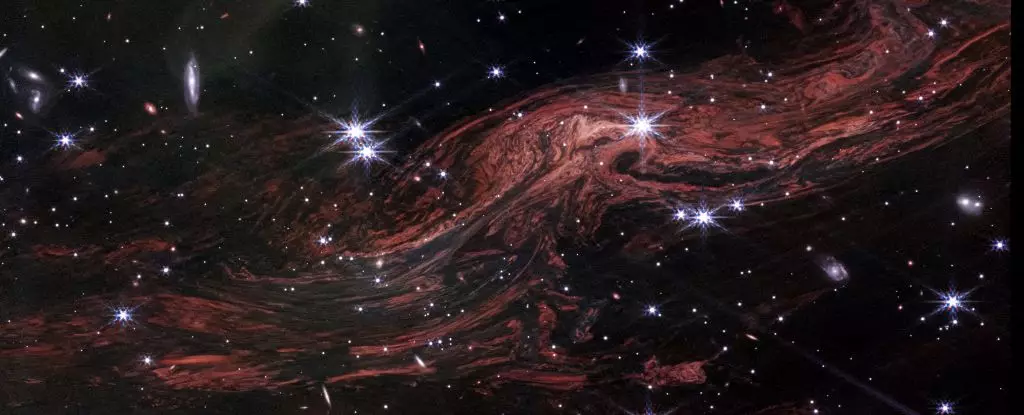The vastness of space is not merely a vacuum filled with stars; it is a complex and dynamic tapestry woven from intricate threads of dust, gas, and light. Recently, the James Webb Space Telescope (JWST) beckoned us to peer deeper into this celestial fabric, revealing extraordinary insights into the interstellar medium surrounding the remnants of the supernova known as Cassiopeia A. First observed in the late 17th century, Cassiopeia A provides a unique lens through which astronomers can explore the nature of cosmic dust and the phenomena that arise from explosive stellar events. The JWST’s capability to detect faint, red light has paved the way for unprecedented revelations about the flow and turbulence of interstellar materials in this area.
The phenomenon of light echoes—where light from an explosive event interacts with cosmic obstacles—has taken center stage in these newfound observations. The essence of a light echo lies in its ability to reflect off dust clouds and return to our viewing instruments at varied intervals, akin to the way sound echoes off surfaces here on Earth. Until now, much of what we knew about light echoes was limited to bright celestial events or dense regions of dust. However, JWST’s advanced infrared technology allows it to capture light from more diffuse clouds, uncovering mysteries that have evaded astronomers for decades.
Recent observations included a stunning sequence of images from August and September 2024, where astronomers noted that the flowing light interacting with the dust yielded remarkable changes within days. This rapid transformation highlighted the intricate dynamics of the interstellar medium, revealing layers of material that resemble the rings of an onion, as aptly described by astronomer Josh Peek.
Before the JWST’s groundbreaking capabilities, attempts to explore the dust near Cassiopeia A were hampered by limitations in clarity and resolution. The retired Spitzer Space Telescope had identified a faint wisp of dust as a potential light echo, but it lacked the resolution required to observe its true complexity. The levels of detail captured by JWST have left astronomers astounded. Jacob Jencson from the California Institute of Technology expressed initial surprise at the richness of these observations, highlighting how these insights unveil a new chapter in our understanding of the interstellar medium.
Among the discoveries is the arrangement of these cosmic materials into densely structured sheets, exhibiting knots and whorls similar to the patterns found in natural wood. Researchers believe these formations could correlate with magnetic field lines permeating the cosmos, suggesting a link between turbulence and magnetic forces. Such revelations not only enhance our understanding of interstellar dust but also offer a fresh perspective on magnetized turbulence’s role in shaping cosmic structures.
The extraordinary observations of Cassiopeia A and its surrounding dust represent a significant milestone in astronomical research. As described by astronomer Armin Rest, this exploration acts as an astronomical equivalent to a medical CT scan. With multiple observations taken at different times, researchers now possess a three-dimensional view of the interstellar environment. This newfound capacity allows them to map the true structure of cosmic dust and gas flows in ways previously considered impossible.
Studying the evolution of light echoes opens a multitude of avenues for understanding cosmic processes. It invites a reconsideration of established theories about the interstellar medium—driving forward research that intertwines the interactions of light, dust, and magnetic fields. As astronomers delve deeper into the analysis of these observations, the foundations of astrophysics as we know it may change profoundly.
With the exquisite details unveiled by JWST, the excitement in the astrophysics community is palpable. Researchers have already begun to present their findings at prominent gatherings, such as the 245th Meeting of the American Astronomical Society. However, the implications of these discoveries transcend the mere presentation of data; they represent a paradigm shift in how we perceive and study the universe around us.
As JWST continues to monitor the cosmic dance of light and dust, further revelations are expected to emerge, enriching our understanding of the universe’s complex structures. From the behavior of cosmic dust to the underlying magnetic phenomena influencing these interactions, we stand on the precipice of an exciting era in astronomy. What once seemed intangible is now becoming tangible, highlighting not only the limits of our knowledge but also the boundless potential of exploration in the cosmos.

